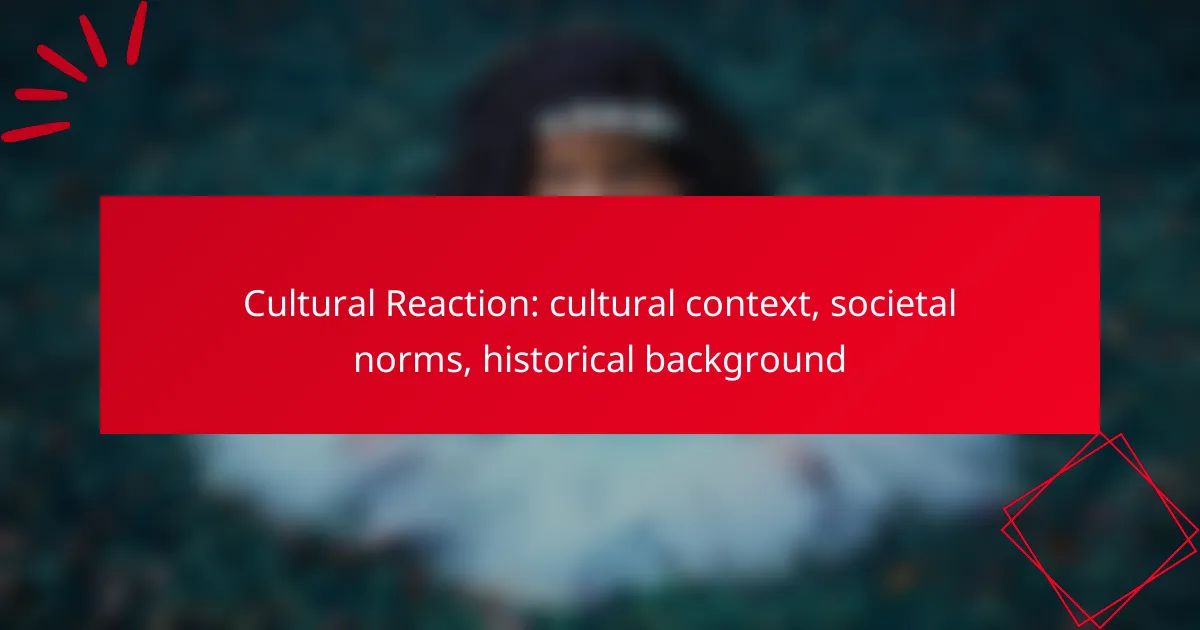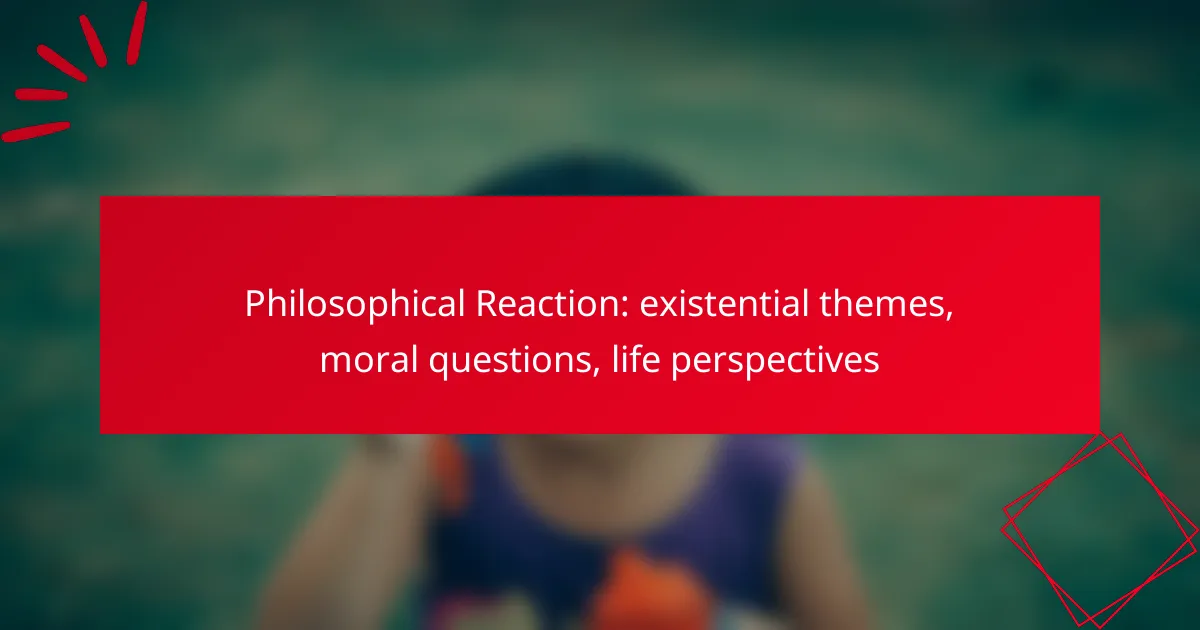Cultural reactions in Australian society are deeply rooted in its historical background and societal norms, often manifesting through public protests, social media campaigns, and community events. Key influences include respect for diversity, awareness of Indigenous rights, and environmental consciousness, which collectively shape public sentiment and responses to cultural issues. Significant historical events, particularly related to Indigenous peoples and immigration policies, have further molded these reactions, reflecting the ongoing evolution of Australian identity.

How does cultural reaction manifest in Australian society?
Cultural reaction in Australian society often appears through various forms of expression, including public protests, social media campaigns, and community events. These manifestations reflect the societal norms and historical context that shape public sentiment and collective action.
Public protests
Public protests are a prominent way Australians express their cultural reactions to social and political issues. These events can range from small gatherings to large-scale demonstrations, often addressing topics like climate change, Indigenous rights, and social justice. For example, the annual March for Justice highlights the demand for accountability regarding violence against women.
Protests in Australia typically require permits, and organizers must adhere to local regulations to ensure public safety. Engaging in peaceful protest is a right protected under Australian law, making it an effective tool for raising awareness and influencing policy.
Social media campaigns
Social media campaigns have become a vital platform for cultural reaction in Australia, allowing individuals and groups to mobilize quickly and reach a broad audience. Hashtags like #BlackLivesMatter and #StopAdani have gained significant traction, facilitating discussions and actions around racial equality and environmental issues.
These campaigns often leverage visual content and storytelling to engage users, making it essential for participants to create compelling messages that resonate with their audience. Successful campaigns can lead to increased awareness, community support, and even legislative changes.
Community events
Community events serve as another avenue for cultural reaction, fostering local engagement and solidarity. Events such as festivals, workshops, and forums provide platforms for discussing cultural issues and celebrating diversity. For instance, NAIDOC Week celebrates the history, culture, and achievements of Aboriginal and Torres Strait Islander peoples.
Organizing community events requires collaboration among local organizations, government bodies, and residents. It is crucial to ensure inclusivity and accessibility, allowing diverse voices to be heard and represented. These gatherings can strengthen community ties and promote shared values, enhancing cultural awareness and understanding.
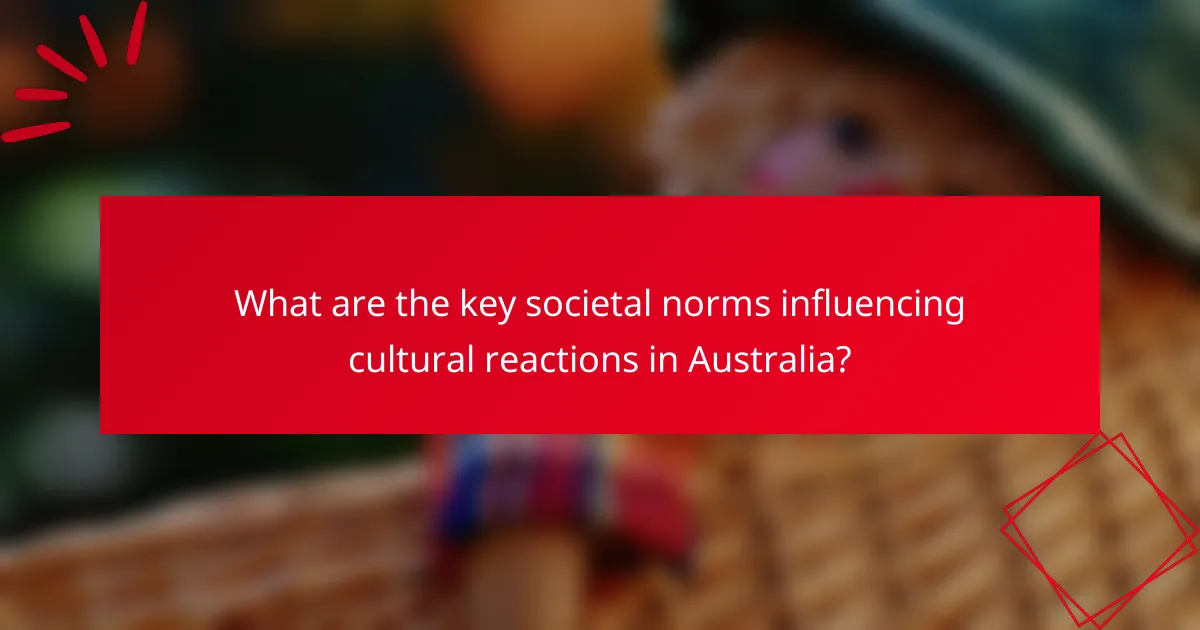
What are the key societal norms influencing cultural reactions in Australia?
Key societal norms in Australia that influence cultural reactions include respect for diversity, awareness of Indigenous rights, and a strong sense of environmental consciousness. These norms shape how Australians interact with each other and respond to various cultural issues.
Respect for diversity
Australia is known for its multicultural society, where respect for diversity is a fundamental norm. This includes recognizing and valuing the various cultural backgrounds, languages, and traditions that coexist within the nation.
In practice, this respect manifests in inclusive policies, community events celebrating different cultures, and social attitudes that promote acceptance. For example, multicultural festivals are common, showcasing food, music, and art from various cultures.
Indigenous rights awareness
Awareness of Indigenous rights is a significant societal norm in Australia, reflecting a growing recognition of the historical injustices faced by Aboriginal and Torres Strait Islander peoples. This awareness influences public discourse and policy-making, emphasizing the need for reconciliation and respect for Indigenous cultures.
Many Australians engage in initiatives that support Indigenous rights, such as participating in events like NAIDOC Week, which celebrates the history, culture, and achievements of Indigenous Australians. Educational programs also aim to increase understanding of Indigenous issues among the broader population.
Environmental consciousness
Environmental consciousness is deeply ingrained in Australian society, driven by the country’s unique ecosystems and the impact of climate change. This norm encourages individuals and communities to adopt sustainable practices and advocate for environmental protection.
Examples include widespread recycling programs, community gardens, and movements aimed at reducing carbon footprints. Australians often participate in local clean-up events and support policies that promote renewable energy and conservation efforts.
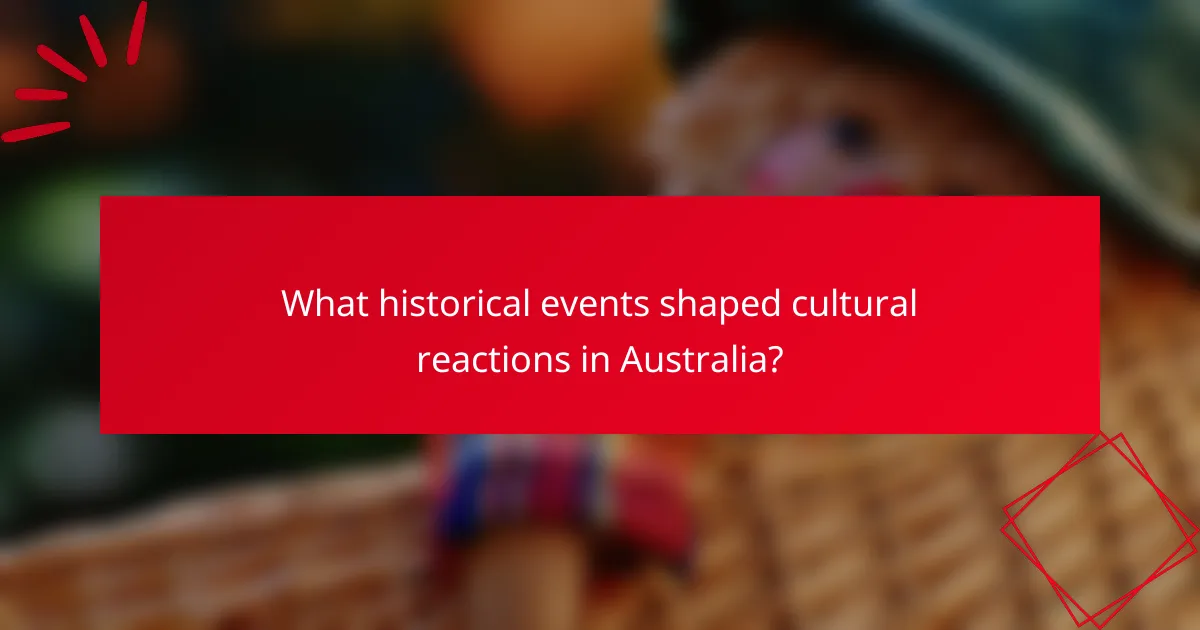
What historical events shaped cultural reactions in Australia?
Several significant historical events have profoundly influenced cultural reactions in Australia, particularly concerning Indigenous peoples and immigration policies. These events reflect the evolving societal norms and values that continue to shape contemporary Australian identity.
Colonization impact
The colonization of Australia in the late 18th century marked a pivotal moment that drastically altered the cultural landscape. Indigenous populations faced dispossession, violence, and cultural erasure, leading to long-lasting trauma and resistance. This impact is still felt today, as many Australians grapple with the legacy of colonization and its effects on Indigenous rights and recognition.
Colonization also introduced European cultural norms that often clashed with Indigenous traditions. The resulting cultural tensions have prompted ongoing discussions about reconciliation and the importance of acknowledging historical injustices in shaping modern Australian society.
White Australia Policy
Implemented in the early 20th century, the White Australia Policy aimed to restrict non-European immigration, promoting a racially homogenous society. This policy not only shaped demographic patterns but also fostered a culture of exclusion and discrimination that marginalized various ethnic communities. The policy’s legacy has led to significant cultural reactions, including movements advocating for multiculturalism and diversity.
The gradual dismantling of the White Australia Policy from the 1970s onwards marked a shift towards a more inclusive society. This change has encouraged a broader acceptance of cultural diversity, although challenges remain in fully integrating different cultural identities into the national narrative.
Apology to the Stolen Generations
In 2008, then-Prime Minister Kevin Rudd delivered a formal apology to the Stolen Generations, acknowledging the suffering caused by past government policies that forcibly removed Indigenous children from their families. This apology was a significant cultural moment, symbolizing a commitment to reconciliation and healing. It has prompted discussions about historical accountability and the need for ongoing support for Indigenous communities.
The apology has also influenced public perceptions and attitudes towards Indigenous issues, fostering greater awareness of the historical injustices faced by Aboriginal and Torres Strait Islander peoples. This cultural shift emphasizes the importance of recognizing and respecting Indigenous rights as integral to Australia’s identity moving forward.
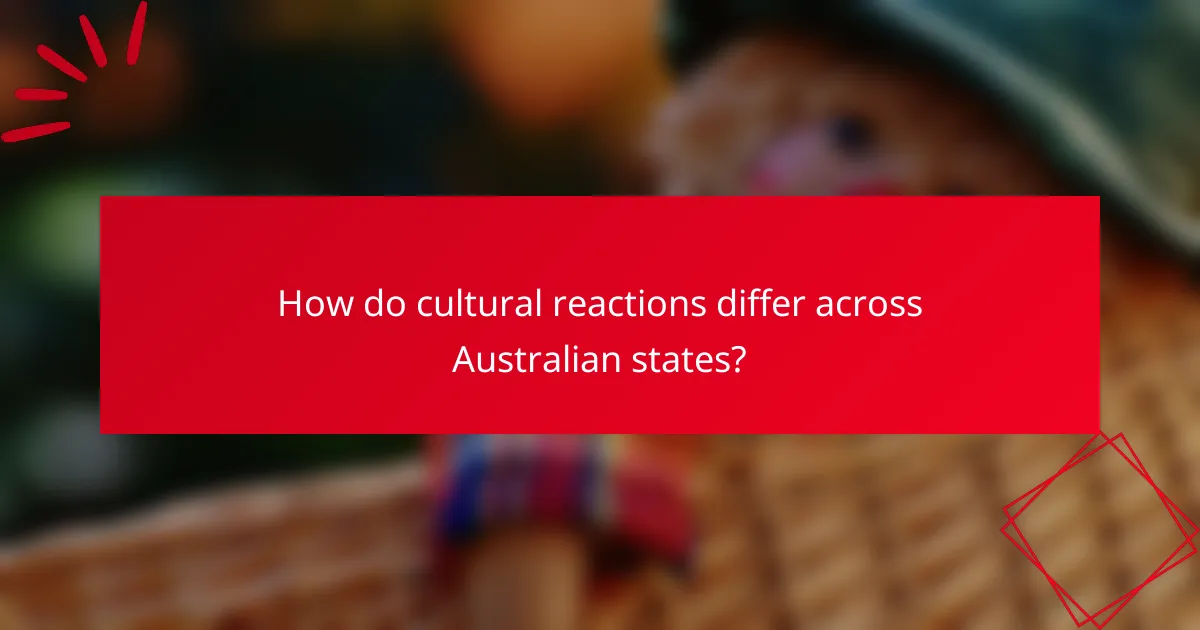
How do cultural reactions differ across Australian states?
Cultural reactions in Australia vary significantly between states due to historical influences, societal norms, and local values. These differences shape how communities respond to social issues, events, and cultural expressions.
Urban vs rural perspectives
Urban areas in Australia, such as Sydney and Melbourne, often exhibit more progressive cultural reactions, influenced by diverse populations and exposure to global trends. In contrast, rural regions may hold more traditional views, reflecting longstanding local customs and a slower pace of change.
This urban-rural divide can affect responses to issues like climate change, gender equality, and indigenous rights, with urban residents typically advocating for more rapid reforms compared to their rural counterparts. Understanding these perspectives is crucial for effective communication and policy-making.
State-specific cultural movements
Each Australian state has its own cultural movements that reflect unique historical contexts and social dynamics. For instance, Victoria is known for its vibrant arts scene and progressive social policies, while Queensland often emphasizes outdoor lifestyles and tourism-driven culture.
In Western Australia, the influence of indigenous culture is prominent, leading to movements that focus on reconciliation and recognition of Aboriginal rights. These state-specific movements shape local identities and influence how communities react to broader cultural trends.
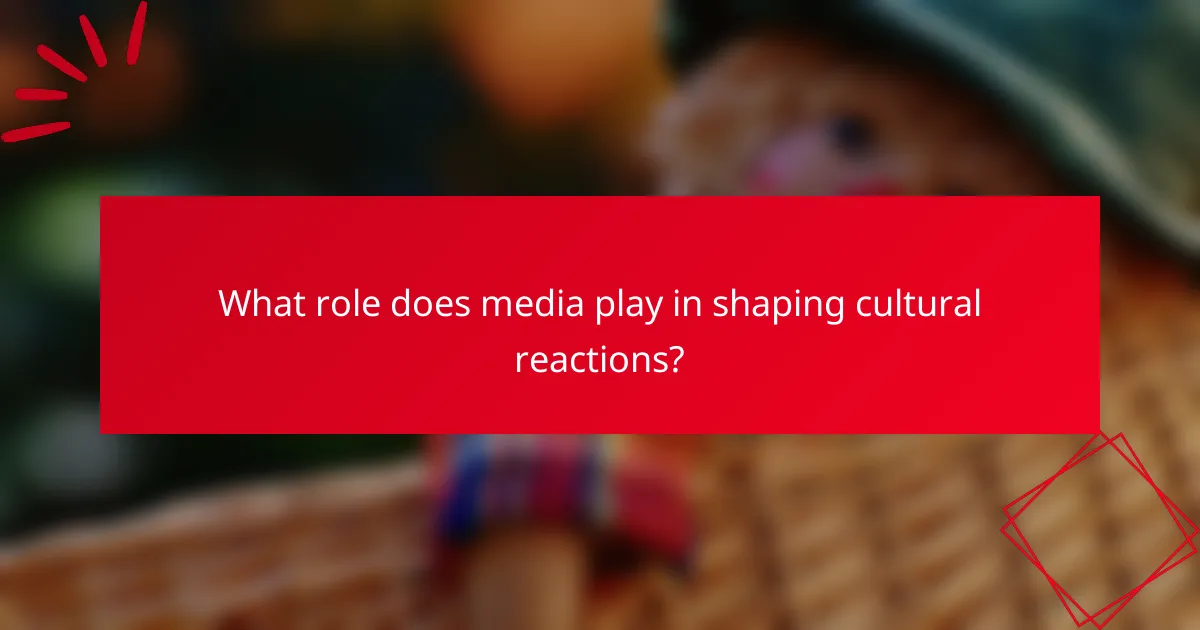
What role does media play in shaping cultural reactions?
Media plays a crucial role in shaping cultural reactions by influencing public perception and societal norms. Through various platforms, media disseminates information that can alter attitudes, beliefs, and behaviors within a community.
Influence of Australian Broadcasting Corporation
The Australian Broadcasting Corporation (ABC) significantly impacts cultural reactions in Australia by providing news, entertainment, and educational content that reflects and shapes societal values. As a publicly funded broadcaster, ABC prioritizes diverse perspectives, which helps foster a more inclusive cultural dialogue.
For instance, ABC’s coverage of Indigenous issues has raised awareness and prompted discussions about reconciliation, influencing public sentiment and policy. By highlighting local stories and cultural events, ABC plays a vital role in connecting communities and promoting cultural understanding.
Impact of social media influencers
Social media influencers have become powerful agents in shaping cultural reactions, particularly among younger audiences. Their ability to reach large followings allows them to set trends, promote products, and advocate for social causes, often leading to rapid shifts in public opinion.
For example, influencers advocating for sustainability can inspire their followers to adopt eco-friendly practices, thereby affecting consumer behavior and cultural norms. However, it is essential for audiences to critically evaluate the authenticity and motives of influencers to avoid being misled by superficial trends.
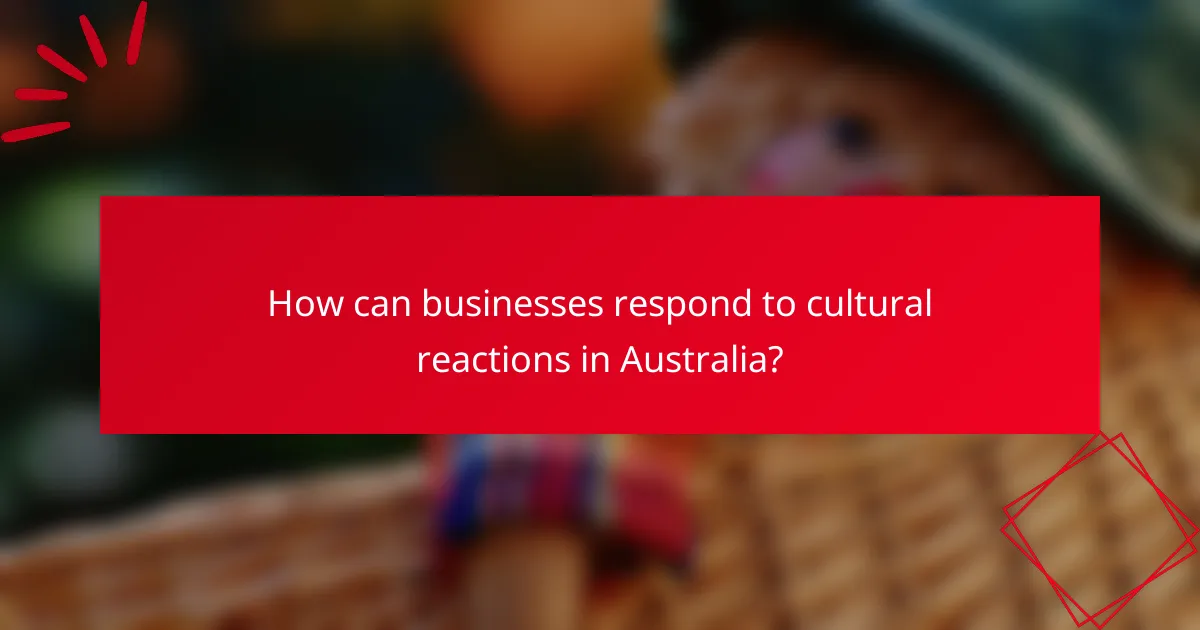
How can businesses respond to cultural reactions in Australia?
Businesses in Australia can effectively respond to cultural reactions by understanding local values and societal norms. This involves actively engaging with diverse communities and adapting strategies to align with cultural expectations.
Understanding Australian Cultural Norms
Australian cultural norms emphasize egalitarianism, mateship, and a laid-back attitude. Businesses should recognize that Australians value authenticity and straightforward communication. Engaging with local customs and respecting the diversity of Australia’s population can enhance brand reputation.
Adapting Marketing Strategies
When marketing in Australia, it is crucial to tailor messages to resonate with local audiences. This may include using humor, local slang, or references to Australian culture in advertisements. Avoiding stereotypes and ensuring inclusivity can prevent backlash and foster positive connections.
Engaging with Local Communities
Building relationships with local communities is vital for businesses. This can involve sponsoring local events, collaborating with indigenous groups, or supporting social causes relevant to the community. Such engagement demonstrates commitment to social responsibility and can enhance customer loyalty.
Monitoring Cultural Trends
Staying informed about cultural trends and societal changes in Australia is essential for businesses. Regularly reviewing social media, news outlets, and community feedback can help identify emerging issues or shifts in public sentiment. This proactive approach allows businesses to adjust their strategies promptly.
Common Pitfalls to Avoid
Businesses should avoid cultural appropriation, which can lead to significant backlash. Misunderstanding local customs or failing to address sensitive topics can alienate customers. Ensuring that marketing campaigns are culturally sensitive and inclusive is crucial for maintaining a positive brand image.
